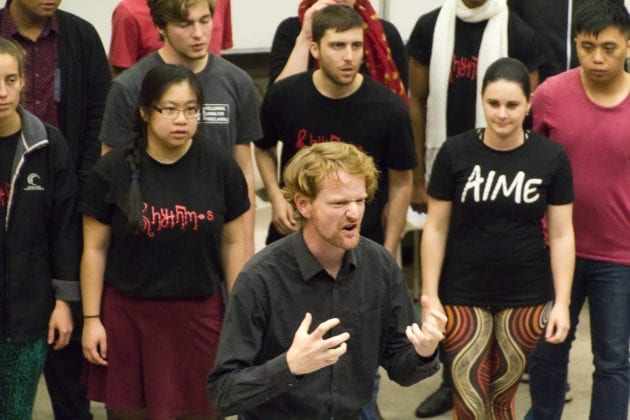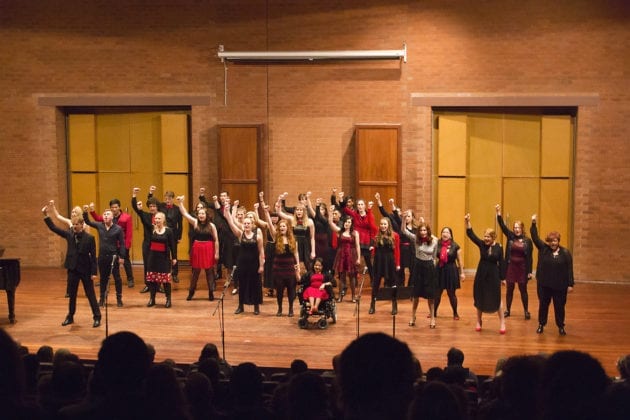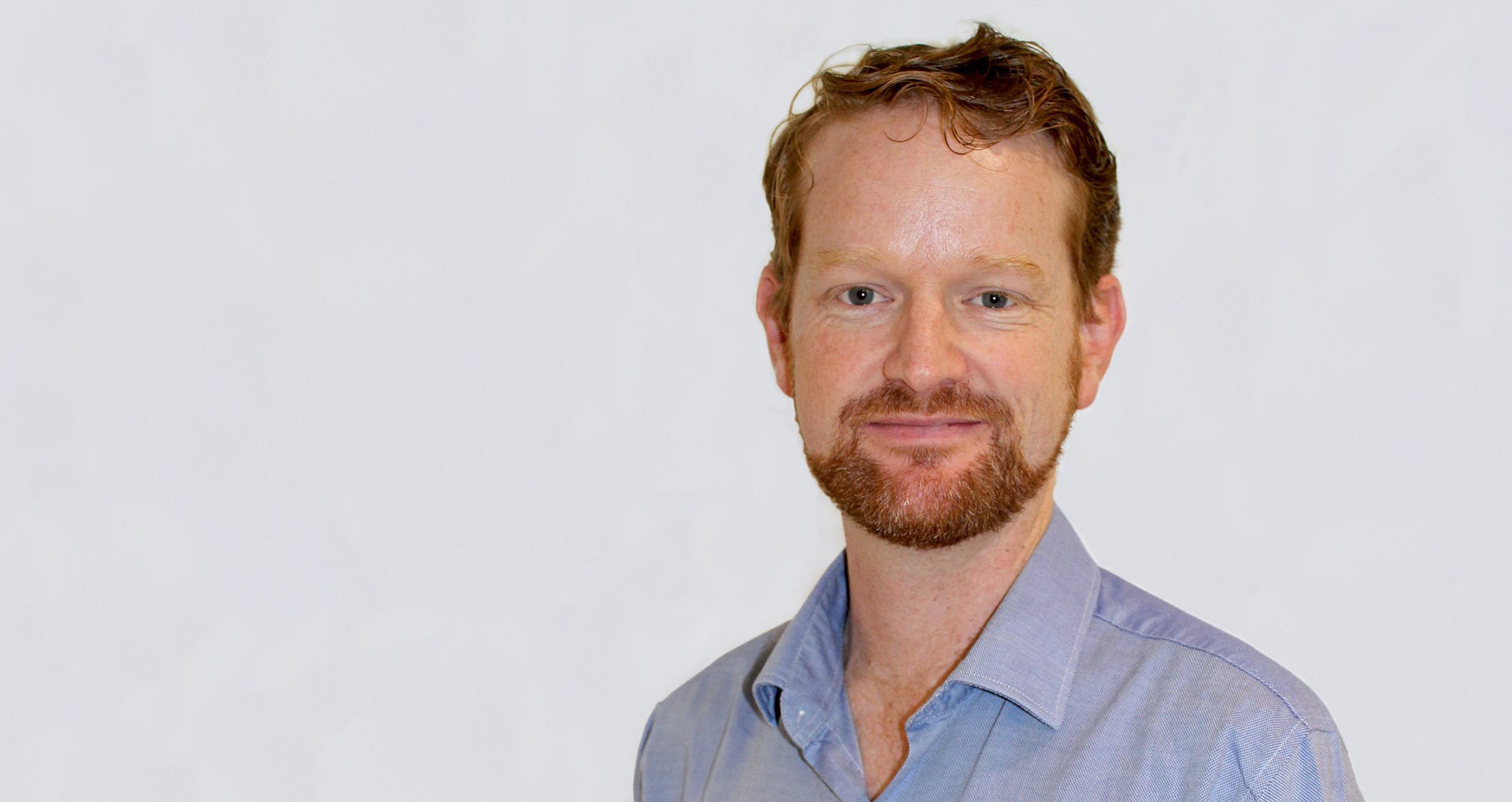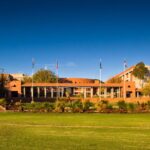When Dr Jonathan Paxman responded to an email in 2011 about joining a team to hunt meteorites, the Curtin senior lecturer and father of four didn’t imagine that five years later he would be juggling school runs with the Australian science industry’s equivalent of the Oscars.
Yet in August 2016, after dropping his four boys off at school in Perth, Paxman was on stage in Sydney to accept the national Eureka Prize for Innovation in Citizen Science on behalf of the Desert Fireball Network – Curtin’s meteorite-hunting team that made headlines for a successful new year’s eve recovery expedition. A whirlwind eighteen hours later, after hobnobbing with the likes of Adam Spencer and Dr Karl and being interviewed on Radio National, Paxman was back in Perth and en route to the Thursday school pick-up.
If those logistics sound exhausting, it’s nothing compared to the logistics of tracking meteorites. Within the Desert Fireball Network (DFN) team, whose goal is to connect a meteorite’s composition with its origin (which in turn will lead to a better understanding of the formation of the Universe), Paxman applies his expert knowledge in control systems and machine learning to contribute to the development of observatory systems, data analysis and the modelling of fireballs as they blaze through the atmosphere.
Paxman’s work with DFN founder Professor Phil Bland and PhD candidates Rob Howie and Martin Towner led to an innovative, low-cost technique for determining the unique timing of meteorites from a single photograph. This patented technique is foundational to the success of the DFN program, and contributed to the successful recovery of the team’s first meteorite on New Year’s Eve, 2015.
Related article: How to find a meteorite in four ‘easy’ steps
Fireballs in the sky
Paxman’s work with the DFN is about more than just the formation of the Solar System, however. A key part of the network is its citizen science program, Fireballs in the Sky. It is this program that resulted in the team’s Eureka win, as well as an earlier win in the 2016 Premier’s Science Awards for Chevron Science Engagement Initiative of the Year.
“Fireballs in the Sky is the outreach arm of the DFN,” explains Paxman. “Its core innovation is an app that allows the public to report fireball sightings, but as part of the program we also arrange school visits and do community presentations.”
The idea for the Fireballs in the Sky app came from thinking about how people could use existing technology to report sightings of fireballs – that is, meteors that leave a blazing trail as they burn up upon entry into Earth’s atmosphere. Every so often, a meteor is large enough that it doesn’t entirely burn up on its descent. When these rocks hit the Earth, they become known as meteorites, and it’s the recovery of these that can tell us so much about the Universe.
“The app uses GPS technology to say where people are when they make an observation and to use accelerometer technology – tilt-sensor technology – to determine the angles of the observation,” explains Paxman. The app also asks people to build a profile of the fireball, such as its duration, colour, shape and brightness, as well as whether it fragmented, and if so, into how many pieces. “That information then comes through to our servers and we can process that in a similar way to how we process the information coming through our official DFN observatories.”
Download the app and become part of the team!
Although the team hasn’t yet been able to search for meteorites based on file report from the app alone, it has alerted the team to several events that have resulted in meteorite findings and even the identification of a Russian rocket stage crashing into the Southern Ocean. But for Paxman, the most important achievement of the app so far is that it has encouraged the wider community to engage with science.
“I think that this is something the project has done really well, using current research to excite kids about science,” Paxman says.
“It’s really important to be able to communicate the impact of new scientific research to school kids and to the public. And the app is so crucial to this because it allows us to involve them in the project so they can actually contribute towards the science as well as just hearing about it.”
A childhood passion
Paxman has been fascinated with maths, science and the Universe since he was a child. Back then, when asked what he wanted to be when he grew up he would declare, “an astrophysicist!” Though partly, he now admits, because “it sounded cool”. But in the years since, Paxman’s focus shifted. At university, he completed bachelor degrees in electronic engineering and mathematics, and a PhD in control systems. He applied this knowledge to help develop self-driving cars and robots for urban search-and-rescue missions through his work at a research centre in Sydney. Now, as Senior Lecturer at Curtin’s Department of Mechanical Engineering, he is teaching the next generation of mechatronics engineers and advancing research in the sector. This research includes projects on sensory mapping and surveying of underground mines, control work for unmanned aerial vehicles and rehabilitative technology for injured or disabled people.
“Thinking back, it’s quite interesting for me, to have gone through engineering, but to now find myself involved with the Desert Fireball Network,” Paxman reflects.
“I could be working on commercial applications, mining or oil and gas – all of which are important fields, of course. But to instead be applying engineering skills and methodologies to a field that’s got fundamental significance, to be working on problems that are about the formation of the solar system … it really is a return to that childhood dream of mine.”
Working in harmony
If the demands of academia and fatherhood aren’t enough, Paxman has also found the time to establish a Curtin choir, Rhythmos.
Paxman has been involved in music most of his life, playing both clarinet and saxophone in high school. In the following years he became heavily involved with choirs and singing. Then, while studying his PhD at Cambridge University, he took it to the next level, forming and conducting his own chorus at Churchill College. Though performing mainly orchestral works such as Mozart’s Requiem and Vivaldi’s Gloria, the choir also took on the challenge of presenting African compositions in their original language, inspired by a visiting professor of ethnomusicology who was also a Nigerian composer.
“The professor opened my eyes to a repertoire that I hadn’t been exposed to before, which we then performed to a fairly expert audience,” Paxman laughs. “It was a bit of a scary prospect, but it was also the most receptive audience that I have ever performed for as well. We had a choir of white, mostly English singers performing African music in African languages from all across the African continent, and it was really exciting and quite rewarding.”
When Paxman came to Curtin, he noted there was a gap in opportunities for people who wanted to be involved in music. It was then that Rhythmos was born.

“We began auditions at the end of 2013, and in 2014 gave our first performance,” he says. “That year, we won a prize at the Joondalup Eisteddfod and in 2015 we won another competition to open for an American a cappella group at Perth Concert Hall, which was pretty amazing.”
Related article: Curtin choir climbs higher scales
Most recently, the science lecturer led the ebullient choir in a musical theatre extravaganza, Soundtrack, which culminated in several hip hop numbers from the award-winning Hamilton musical and earned them a standing ovation from the enamored crowd.

Nationally commended
With such strong dedication to educating students both inside and outside the classroom, it’s no surprise to learn that the Australian Government caught wind of Paxman’s good work and rewarded him with a Citation for Outstanding Contributions to Student Learning at the 2016 Australian Awards for University Teaching.
Specifically, the citation acknowledged Paxman for “approaches to research-integrated teaching, support for student activities, and outreach that build the confidence, motivation and identities of citizens and engineers of the future”.
And if these engineers of the future are anything like the benchmark Paxman sets, then Australia is a lucky place indeed.



